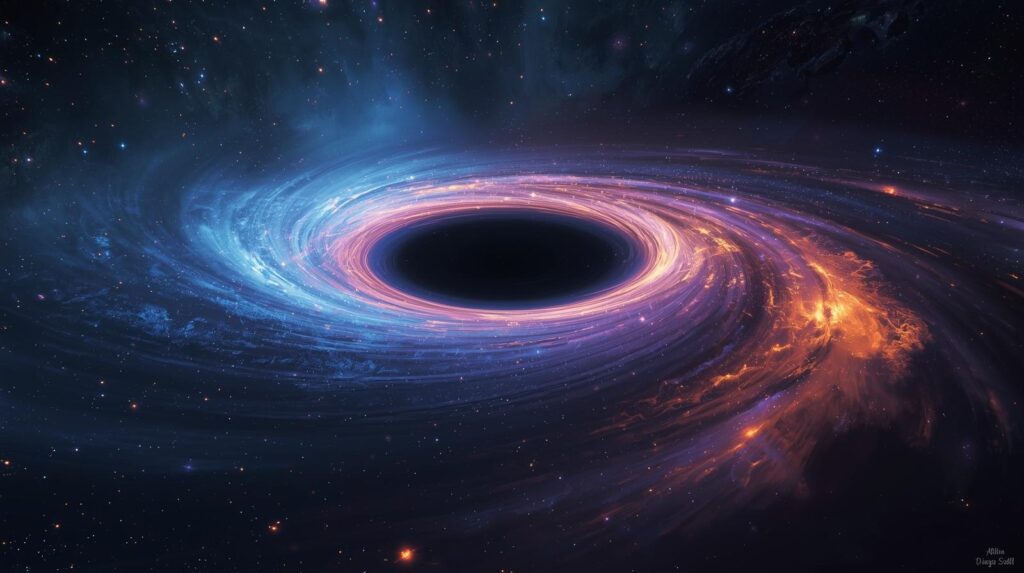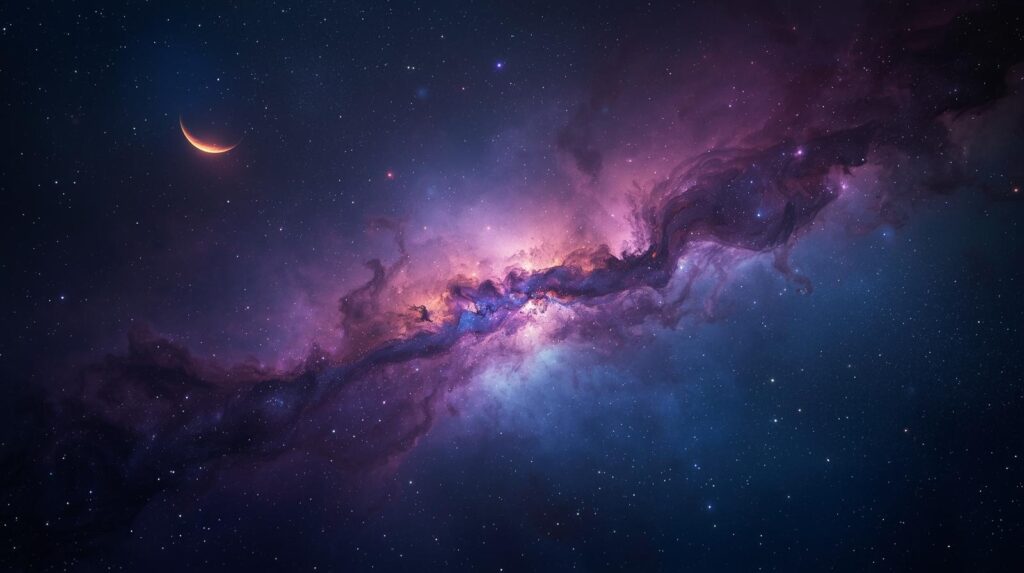The Dark Heart of Space: The Mystery of Black Hole
Have you ever wondered about a destination where even light can’t flee? Sounds impossible, right? But believe it or not, it exists. It’s known as a black hole. A black hole is not space. It’s a region in space where gravity is so intense that it sucks everything in. It occurs when a large star is crushed by its own mass and shrinks to be extremely dense and tiny. Black holes are unusual because they do not obey the normal principles of science. They warp the way we understand space and time. That’s why scientists have always been fascinated by them and entertained people with tales in films and literature.
A Brief History of the Idea
The idea of black holes began as a crazy hypothesis. In 1915, Einstein’s general relativity predicted gravity might warp space-time. One year later, Karl Schwarzschild determined that a large object would collapse into a singularity with such intense gravity that light is trapped. These theories brewed until the 1960s, when astronomers discovered proof of actual objects agreeing with the theory. Now, we know black holes are more than math—they exist, and they’re determining the universe.

How Black Holes Are Born
Stellar Collapse: The Star’s Final Act
Most black holes begin with stars. Giant ones, at least eight times our sun’s mass, live and die young. When they exhaust their fuel, they can’t resist the pull of gravity. The star collapses under its own weight, shrinking to a point known as a singularity. Imagine a giant beach ball collapsing to a marble, but containing the same amount of mass. The outer shells explode in a supernova, with the black hole surviving. Our sun will not because it is too small, but stars such as Betelgeuse within the constellation of Orion may.
Other Origins: From Small to Gigantic
Not every black hole originates from a star. Primordial black holes, which are hypothetical to have been created in the pandemonium of the Big Bang, may be as small as a grapefruit. At the other end of the scale, supermassive black holes, with masses of millions or billions of suns, hide in galaxy cores. Our Milky Way’s Sagittarius A is one such, with around 4 million solar masses. They could be created through gas cloud collapse or the merger of smaller black holes early in the universe. There’s each type to add to the mystery. How do they accrete so much matter so rapidly?
The Anatomy of a Black Hole
The Event Horizon: No Turning Back
The edge of a black hole, the event horizon, is its point of no return. Cross it, and you’re gone—light, matter, everything. It’s not a physical wall but a line where escape velocity is greater than light speed. Imagine it like the edge of a waterfall: once over, the current takes you in. The size of the event horizon, called the Schwarzschild radius, depends on the black hole’s mass. For Sagittarius A, it’s about 12 million kilometers, which is small considering how massive it is.
The Singularity: Where Rules Break
Inside that core, the singularity is where physics as we understand it breaks down. Space and time warp into something that our formulas can’t define. Imagine opening a book whose pages are stuck together—impossible to decipher. That’s where the intrigue begins: what is actually going on in there? We don’t have a clue, and that’s what keeps scientists awake at night.
How We Detect the Unseen
Gravitational Hints
lack holes don’t radiate light, detecting them is akin to following a shadow. We identify them by their imprint. Stars whizzing around an invisible object? Most likely ,a black hole’s gravity. In X-ray binaries, a star’s gas is pulled into a black hole, heating to the point of glowing in X-rays before being consumed. Cygnus X-1, discovered in the 1960s, was one of the first and it confirmed the presence of a star and black hole in a dance through space.

Event Horizon Telescope: A Breakthrough
In 2019, the Event Horizon Telescope presented us with a mind-blowing present: the very first picture of a black hole in the galaxy M87. It revealed a luminous ring of gas encircling a dark center—the shadow of the black hole. In 2022, Sagittarius A* received its close-up. These pictures, constructed from radio telescope observations around the world, confirmed that black holes exist, not merely theory. It’s akin to taking a picture of a ghost after years of listening to its footsteps.
The Bizarre Universe of Black Holes
Time Dilation: The Unusual Travel of a Clock
Gravity around a black hole distorts time itself. Come close, and time creeps by compared to the rest of the world. Orbiting close to the event horizon (if you lived), you’d get older more slowly than your buddies at home. It’s not science fiction; it’s Einstein’s relativity in action. Imagine it as a slow-motion replay in a sporting event—everything crawls while the rest of the world speeds along. This time dilation creates black holes that seem like doors into another world.
Hawking Radiation: Do They Evaporate?
Stephen Hawking threw a twist into the 1970s: black holes may not last forever. Quantum processes at the event horizon may make them leak energy, referred to as Hawking radiation, gradually diminishing over billions of years. Small black holes may even disappear in an instant. It’s a contradiction—black holes capture everything, and yet they may disappear. The concept merges quantum mechanics and gravity, two disciplines which do not get along, so it’s a controversial piece of debate.
Quasars: Bright Lights from the Early Universe
Long ago, in the early universe, some black holes developed very rapidly and became quasars. Quasars are extremely bright objects fueled by massive black holes that are consuming plenty of gas and dust. Quasars are so brilliant that they can be seen all over the universe, even brighter than galaxies. They are giant flashlights that allow scientists to see deep into space and understand how galaxies and black holes evolved and interacted over billions of years.
Final Thoughts: The Mystery Remains
Black holes are still shrouded in mystery. They can be small, perhaps created at the time of the Big Bang. Others are gigantic and are located at the center of galaxies. They reveal to us things that we do not yet comprehend about space, time, and gravity. There are many questions left unanswered. What actually occurs at the heart of a black hole? Will we be able to harness their strength someday? Might they connect to other regions of the universe?
